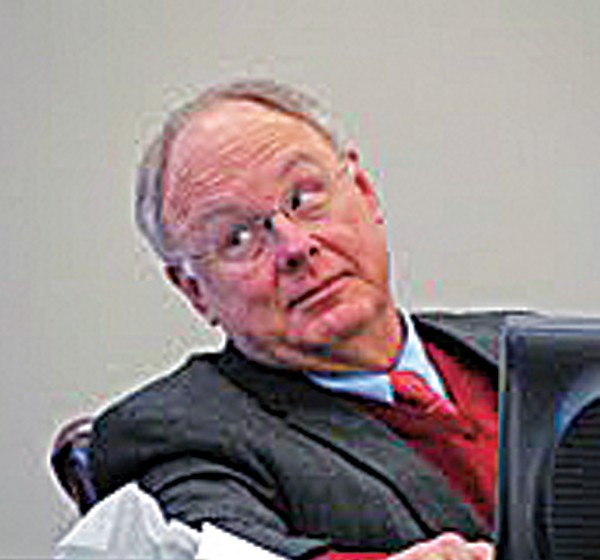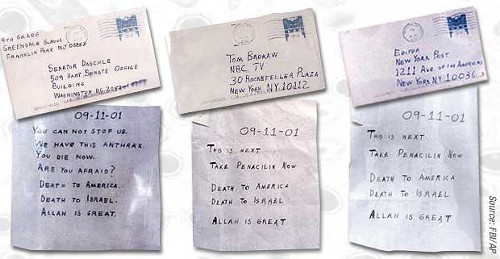Shelby County Commission chairman Mike Ritz, the man who has been at the center of the school-merger crisis for the last two years and has been the driving force behind ongoing litigation, assayed the situation in the wake of Monday’s passage of municipal-schools legislation in Nashville and saw some complications remaining.
 Jackson Baker
Jackson Baker
Mike Ritz
At some point, a few of the six suburban municipalities may find the independent school districts they establish vulnerable to legal challenge, Ritz said. The chairman, a resident of Germantown himself, pinpointed Germantown as most likely to encounter problems because of the large number of non-resident students served by the eight schools now operating within the city.
“These students may not be educated by the city for long because they won’t be contributing to the taxes paid by Germantown residents to maintain the schools, and the city’s taxpayers may get their board to react to that,” said Ritz, who noted that a fair number of the outliers would be minority students, and any change in their status would put the district in jeopardy.
The next phase of the commission’s litigation against municipal schools is an equal-opportunity challenge on resegregation grounds, and presiding U.S. district judge Hardy Mays is maintaining the option to hold trial on the point, though Ritz acknowledged that any such process might not occur until after the new municipal districts are established, probably in August 2014.
Another matter noted by Ritz was that of how and at what cost new municipal districts might acquire existing school buildings. This is a question to be negotiated between the municipalities and the Unified School Board, Ritz said. “That makes it all the more urgent that we go ahead and expand the board to 13 members, a number more representative of the entire community.”
Ritz said that enough issues remained unresolved to justify a resumption of the negotiations between the commission and the municipalities that were conducted briefly but suspended at year’s end. “I think they [the municipalities] will see it in their interest to come back to the table,” he said.
• The bill enabling municipal schools in Shelby County (SB 1353/HB 1288) was a retooling of a 2012 version that had been ruled unconstitutional by Mays because its application was limited to Shelby County.
The new version applies statewide and, for whatever reason, did not encounter the controversy that befell an early draft of the 2012 bill that was scaled back to meet objections from legislators outside Shelby County.
With little more than perfunctory debate, this year’s bill passed both chambers of the Republican-dominated Tennessee General Assembly with comfortable margins Monday, thereby allowing the de facto secession from Shelby County’s soon-to-be “unified” school district that six suburban municipalities in the county have been seeking for at least two years.
Mayors and other representatives of those suburbs — Germantown, Collierville, Bartlett, Lakeland, Arlington, and Millington — were on hand for the occasion and were introduced in the state House of Representatives by suburban GOP members before Monday’s vote in that chamber. The House vote was 70-24 in favor. The Senate followed with a 24-5 tally for the bill.
There was some opposition. In the House, Representative Bill Dunn (R-Knoxville) rose to express forebodings about the measure and declared his opposition to it, as he had to last year’s original model. Dunn worried that, since this year’s bill, unlike the final product last year, was cast so as to apply statewide, not just to Shelby County, “we’re going to see some problems down the road.”
The Knoxville legislator pointed out that he had ultimately supported the Shelby County-only version of last year’s bill, but “unfortunately, a judge shut it down.” He reminded his colleagues that he had “asked that the current bill be rolled” until a version with dependable safeguards for school districts statewide could be perfected, but,” unfortunately it was not rolled.” Consequently, “I will be voting no tonight. I hope I’m wrong, but I don’t think I’m gonna be.”
Objections came also from representatives from the city of Memphis, who, unlike their suburban Shelby County colleagues, were opposed to the bill. Representatives G.A. Hardaway, Antonio Parkinson, and Johnnie Turner all took shots at the measure, articulating their concerns about the effect of the bill on the county’s unified school district, still in the process of formation, and extracting assurances from primary House sponsor Curry Todd (R-Collierville) that the bill had no immediate impact upon the future disposition of school buildings currently owned by Shelby County.
Both Hardaway and Parkinson gave voice to a rumor that has circulated widely of late, namely, that an unspoken arrangement exists between the bill’s sponsors — Todd and Senate majority leader Mark Norris being the principal ones — and Republican colleagues in districts elsewhere to the effect that a one-year window would be held open for Shelby County and would be closed for everybody else by follow-up legislation next year.
Todd, who had begun his remarks by expressing thanks for the “61 signatures” of House co-sponsors he had received, blithely gave assurances that no such revocation next year was planned and that if it was proposed, “I would vote against it.”
Representative Craig Fitzhugh (D-Ripley), leader of the 27 House Democrats, made one last stand against the measure. “I hadn’t planned to speak on this bill,” Fitzhugh said. “I thought I didn’t have a dog in the hunt. … But, as so goes Memphis, so goes my little town and my district.” And he expressed concern about the “long-term effect” of the bill upon Memphis.
In the Senate, Democratic leader Jim Kyle (D-Memphis) warned his Senate colleagues of potential negative effects of the bill on other counties and other districts.
“A special school district could withdraw and become a municipal district,” he said. “This is a mistake — a mistake you’ll see in your community one day.” And senators would ask themselves, said Kyle, “‘Why did I get involved in a boundary dispute in Shelby County?’ … bringing to your front door what essentially is a local dispute.”
The bill now requires only the signature of Governor Bill Haslam and perhaps an ultimate vetting by Mays.
• Another long-running issue dealt with as the General Assembly neared the end of the 2013 session was legislation (SB 0132) proposed by state senator Stacey Campfield (R-Knoxville) that would have required the state department of human services to reduce state aid to families of failing school children.
Dubbed “Starve-the-Children,” the bill would be shunted off to “summer study” by the state Senate, earning a fate that had previously befallen Campfield’s “Don’t Say Gay” bill that would have outlawed discussions of homosexuality in the state’s elementary schools. That bill, after being relegated to summer study in 2011, finally expired in a House committee this year.
The first hint of serious trouble for Campfield on SB 0132 came during floor debate, when GOP majority leader Norris pronounced himself “queasy” about the bill, which would reduce state aid to dependent families whose children were experiencing grade trouble. The bill had already engendered a mid-week statement of opposition from Haslam and had been actively opposed by any number of agencies and institutions concerned with student welfare.
Norris told Campfield, “You’re fooling yourself,” regarding the Knoxville senator’s claim that only parents and not children would be penalized by the withholding from the affected family an average of $20 a month in state support payments. The majority leader also referred to the bill as “the sort of legislation that gets challenged in a court of law as vague and ambiguous, arbitrary and capricious.”
Concurring with a statement by state senator Lowe Finney (D-Jackson) that the bill would “make the child responsible for the parents’ actions,” Senator Todd Gardenhire (R-Chattanooga) said, “You can’t legislate parental responsibility. I don’t care what you do.” He foresaw “unintended consequences” for the student. “The parent will beat the dog doo out of him for taking that $20 away from them, that’s what’s going to happen.”
In the end, with Lieutenant Governor Ron Ramsey (R-Blountville), the Senate speaker, explicitly encouraging him to do so, Campfield offered to have the bill referred again to the Senate health committee and to have it relegated to the aforesaid summer-study status, which he hoped would allow it to be ultimately retooled in coordination with K-12 education subcommittees of the Senate and House.


